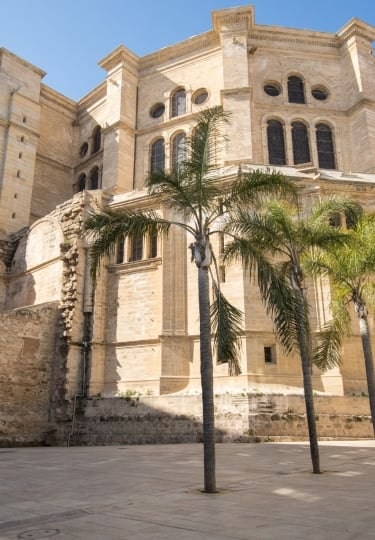Málaga Old Town, the city’s Centro Histórico, is a pretty, predominantly pedestrianized zone that clusters many of the city’s storied sights into an easy stroll.
Take an amble across the Málaga historic center and you’ll traverse the city’s chronology, from the oldest quarter, where an excavated Roman theater rests below a fortified Moorish palace, to stately Renaissance residences reborn as museums, and a neo-Mudéjar market.
Yet the historical heart of Andalusia’s second city is far from being a time capsule. Following a 19th-century industrial boom and the construction of grand shopping streets linking spacious plazas, the lived-in, animated, and well-preserved Centro Histórico is equally lauded for its thriving tapas bar scene and world-class museums as its churches and convents.
Attractions in Old Town Málaga
Alcazaba
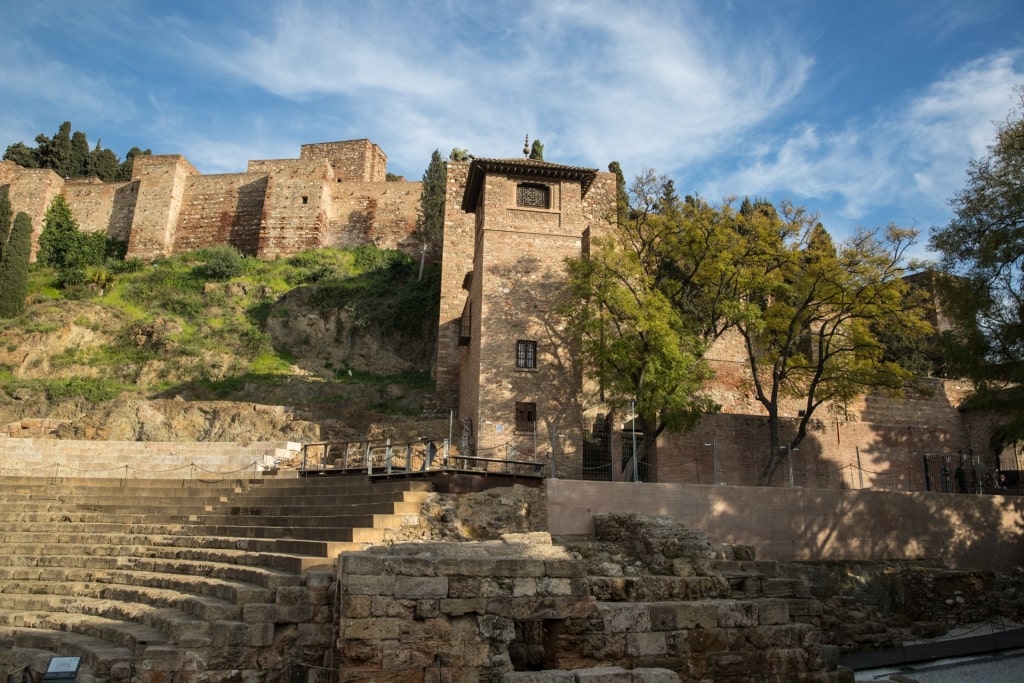
Alcazaba
The Moors, originally North African Muslims, reigned over Andalusia, or al-Andalus as they called it, for eight centuries.
Their cultural vestiges and architectural legacies are still writ large across the region, and in Málaga Old Town, there’s no better example of that historical might than the Alcazaba, one of the most beautiful places in Spain.
Initially constructed as a fortification, the 11th-century Alcazaba evolved into a protected palatial complex after the adjacent and hulking Castillo de Gibralfaro, just beyond Málaga Historic Center, was added to defend Gibralfaro Hill.
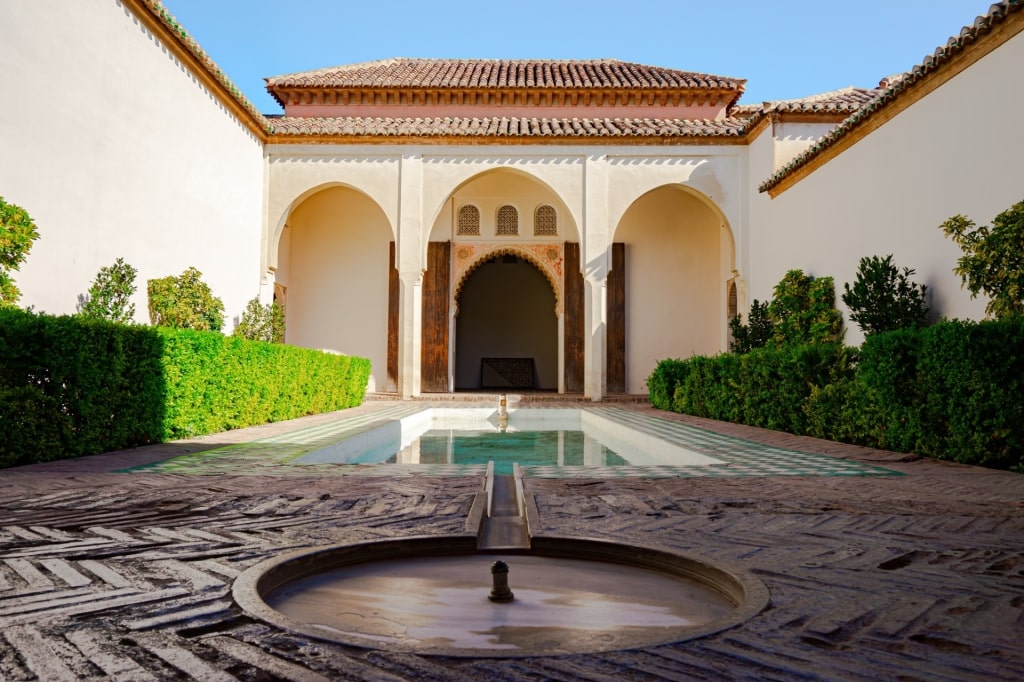
Patio de la Alberca, Alcazaba
While heavily restored, the authentic Moorish essence is mindfully preserved. Often called the Little Alhambra, the Alcazaba has numerous architectural similarities with Granada’s monumental landmark. Also built during the Nasrid period, the peaceful, pool-framing Patio de la Alberca is the most comparable part of the complex.
Guided tours are the best way to gain an in-depth understanding of the site and avoid overlooking the intricate details of the decorative arches, pretty rose gardens, and ingenious architecture designed to deliver a cool airflow.
El Teatro Romano
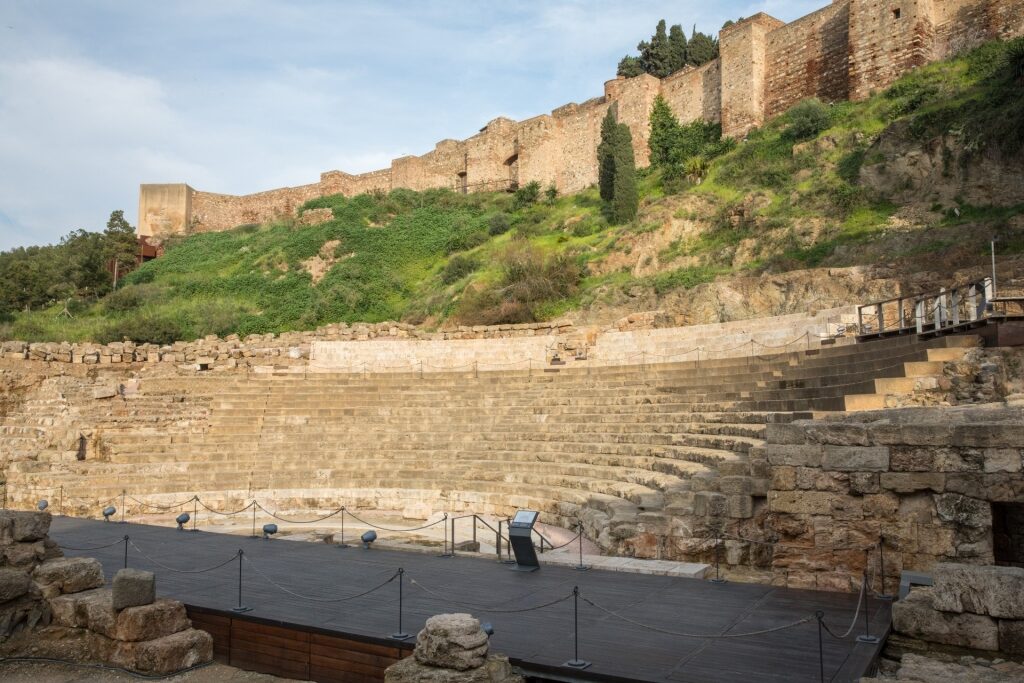
El Teatro Romano
Constructed during Augustus’s reign, Málaga’s first-century Roman Theatre descends like a staircase in front of the Alcazaba.
The semicircular open-air venue hosted performances and events for around two centuries before becoming a necropolis. Later, the Moors reused some stonework to build their fortifications. Eventually, the theater disappeared under newer constructions until its rediscovery in 1951.
Nowadays, even without entering, you can appreciate the entire cavea, the seating section, from the paved viewing area fronting Jardines Manuel Atencia García—a leafy space providing views and much-needed respite on a summer’s day.
In front, peer into the glass Pirámide de Cristal to see archaeological work below, where garum, a fermented fish sauce, was produced. For a closer inspection, enter the site and access the interpretation center. Original fragments of the Lex Malacitana, the local statutes of the time, are displayed inside.
Catedral de Málaga
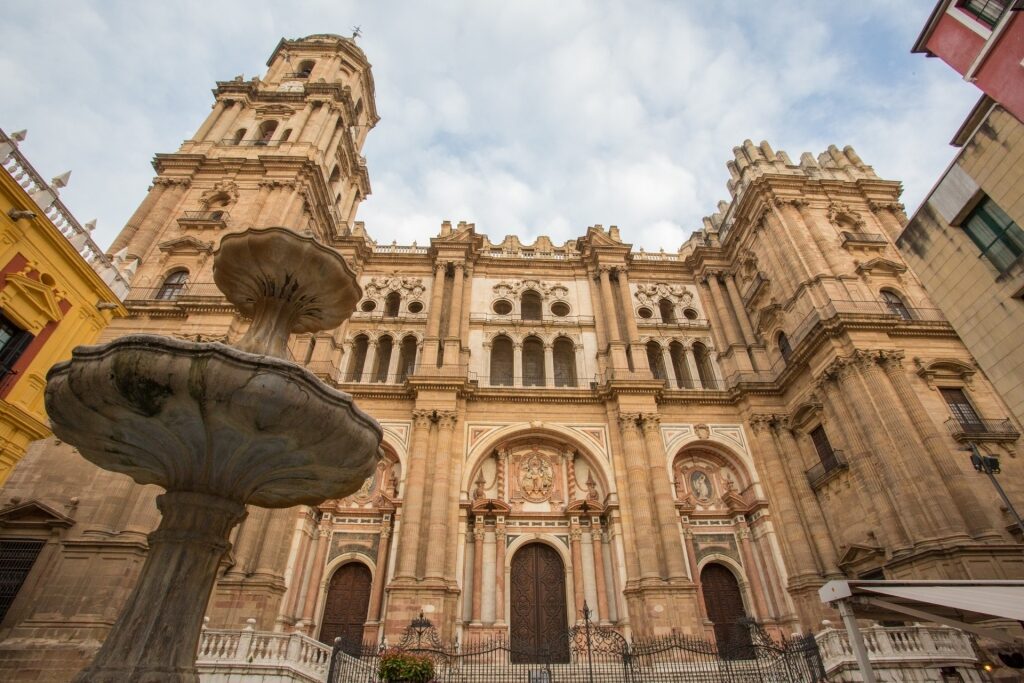
Catedral de Málaga
Standing before Málaga Cathedral, your second impression—the first being wonderment—is that the lopsided structure isn’t quite complete. And you’d be correct. The single bell tower wasn’t a planned, unsymmetrical appearance but resulted from overrunning construction, leaving the cathedral unfinished.
Still, nearly 250 years were spent building Málaga’s centerpiece, and rather than being a blemish on an otherwise glorious building, the lack of a southern tower has earned the edifice the affectionate nickname of “La Manquita,” meaning the one-armed woman.
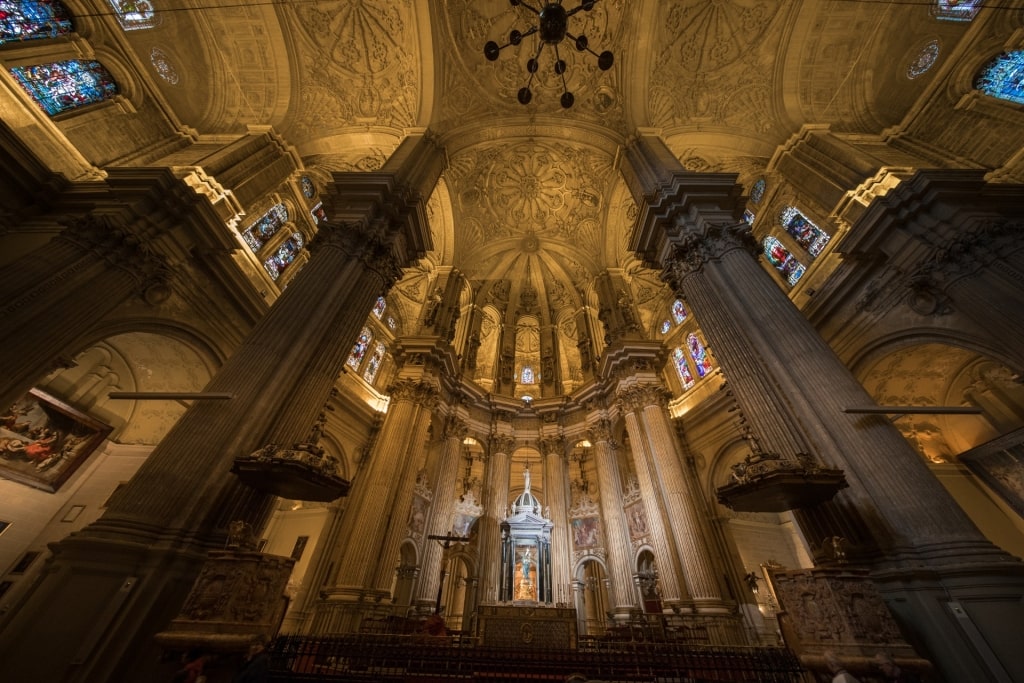
Catedral de Málaga
Beyond the not-quite-complete Gothic facade, an explosion of Renaissance and Baroque beauty awaits —a far cry from the site’s former life as a mosque. Let your eyes be guided by soaring columns leading to the intricately carved ceilings, the vivid stained glass windows just below vying for your attention.
A dozen ornate chapels flank the nave, leading towards the 18th-century gilded altarpiece. Yet the spotlight-stealer is the cedar and mahogany choir, embellished with highly detailed and distinct 17th-century carvings. Once reopened in 2027, the cathedral’s roof will again provide panoramic views of Málaga’s Historic Center.
Palacio Episcopal
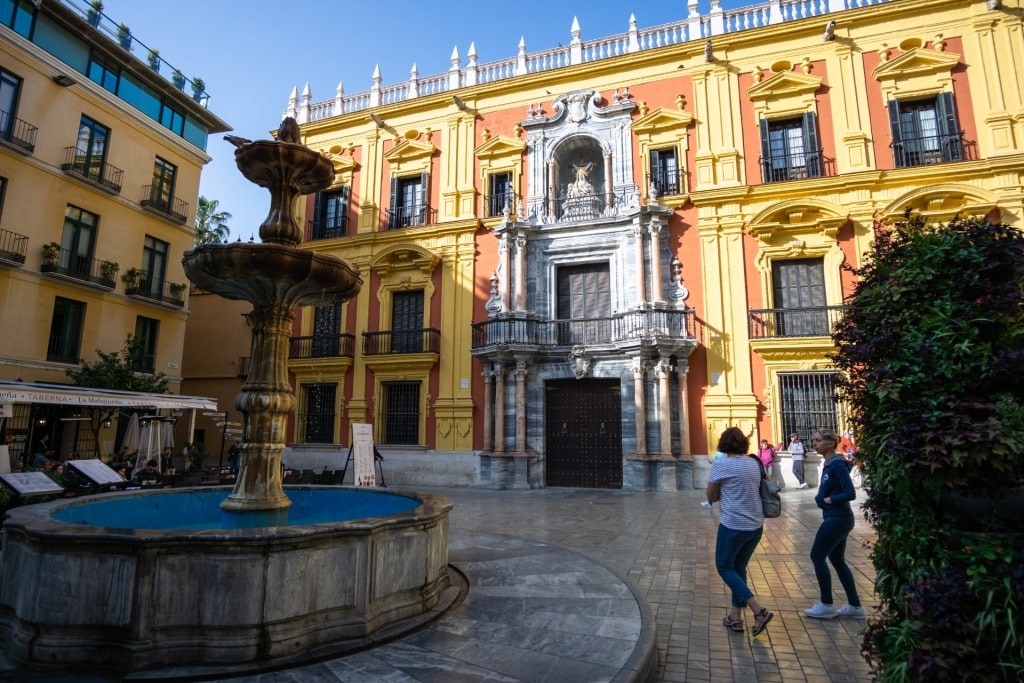
Palacio Episcopal
Opposite the cathedral, the Palacio Episcopal, or Bishop’s Palace, a block-covering clutch of buildings, is unmissable. Recognizable for its bold mustard and crimson Baroque facade, it’s one of Málaga’s most prominent 18th-century monuments.
Given a new lease of life as the Centro Cultural Fundación Unicaja de Málaga, it’s well worth crossing the mighty marble entranceway to visit the space’s varied art exhibitions.
Even if you’re saving your art appreciation for Málaga’s most famous painter, Pablo Picasso, take a peek around the tree-shaded courtyard of the building, adorned with neo-Moorish fountains and bordered with ceramic tiles.
Church of Santiago
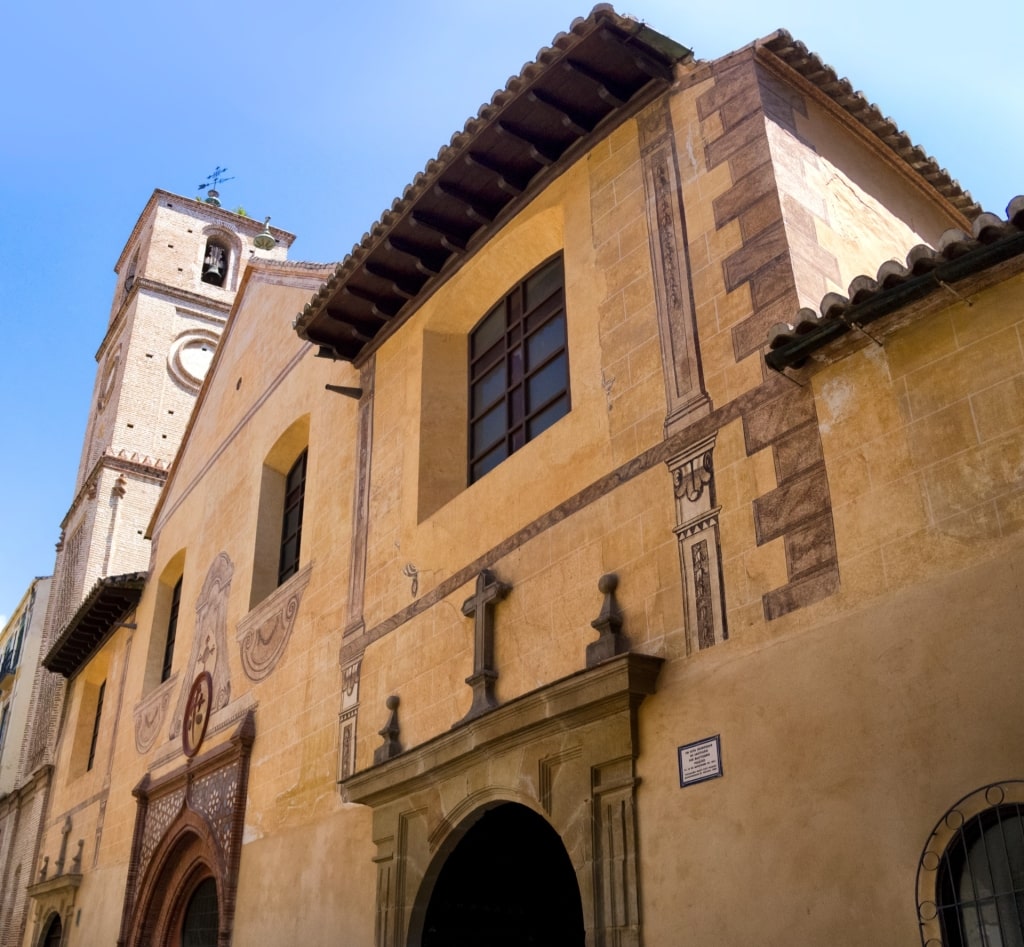
Church of Santiago
Malaga’s oldest church pales in size when compared to the city’s cathedral. However, it’s still worth venturing through the Mudéjar-style door of this former mosque to appreciate the internal architecture.
From the first glimpse of the contrasting white and gilded ceilings and the eye-pleasing olive-hued altar, it’s hard not to be bewitched. Revered religious art and cherished items used in Málaga’s Easter procession, Semana Santa, add further dazzle, as does the fact it was here that Picasso was baptized.
Read: Spain Travel Tips
Things to Do in Málaga’s Old Town
Peruse the Picasso Museum
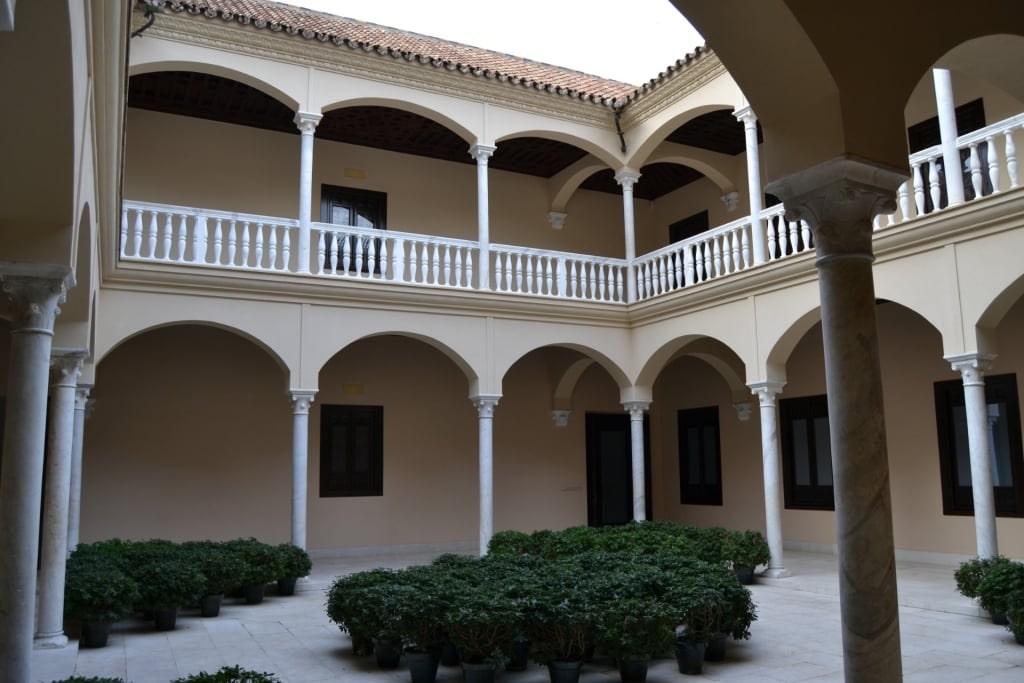
Picasso Museum Photo by Emilio on Flickr, licensed under CC BY-SA 2.0
Born in Málaga Old Town in 1881, the influential 20th-century artist Pablo Picasso is undoubtedly the city’s most famous former resident.
If you’re a fan of the artist’s life and work, then both his birthplace—now Casa Natal Picasso, a small house museum—and the Museo Picasso are must-visits. The latter, the city’s landmark museum, is the main highlight for those less familiar with his works.
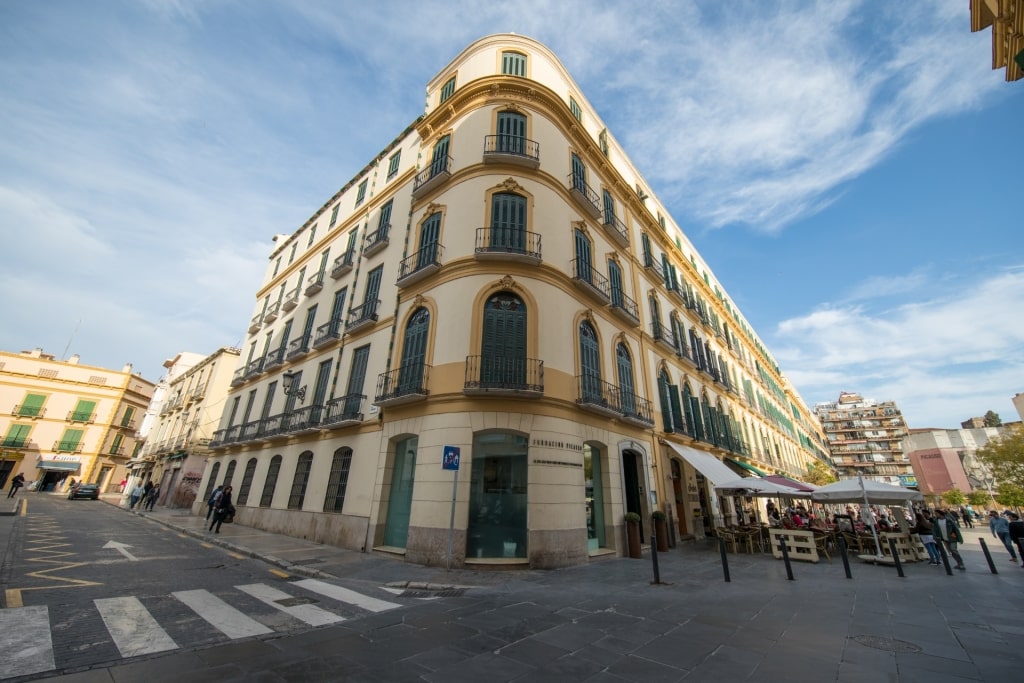
Casa Natal Picasso
Housed across a striking contemporary white space and the 16th-century Buenavista Palace, where Phoenician ruins and Moorish embellishments are still visible, the spectacular twelve-room gallery contains around 230 works alongside temporary exhibitions.
Many of the pieces you’ll witness are those that Picasso chose to keep, later donated by his daughter-in-law and grandson. This adds a more personal touch to the collection, which spans ceramics, prints, and sculptures alongside some of his more famous paintings.
Be Pampered in a Hammam
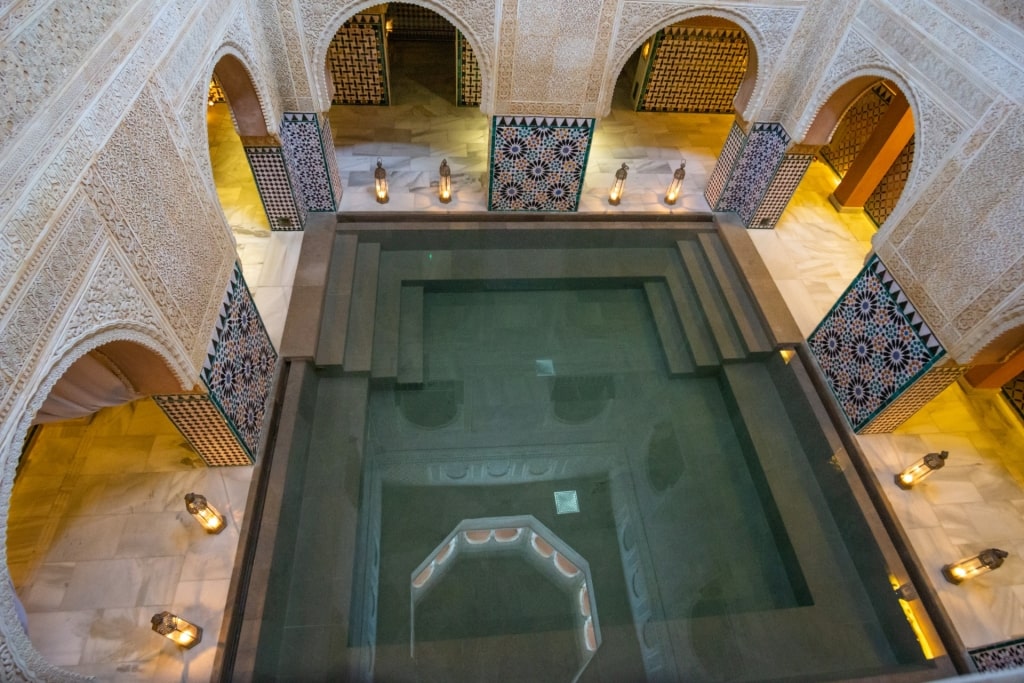
Hammam Al Ándalus
Malaga’s Arabic baths were a vital lifestyle ritual during the Moorish period. Sadly, unlike some neighboring Spanish cities, most of Málaga’s former baths were destroyed.
However, Hammam Al Ándalus, constructed atop the ruins of an ancient 16th-century Arabic bathhouse, has returned these indulgent cleansing rituals to Málaga’s Historic Center.
Make a reservation and enjoy a luxurious experience across the handful of thermal baths. Intricate mosaic work and reconstructed arches all add to the allure of the serene setting. Essential oil massages and purification rituals are also available if you’d prefer more than just a water cleanse.
Amble Along Calle Larios and Pause at Plaza de la Constitución
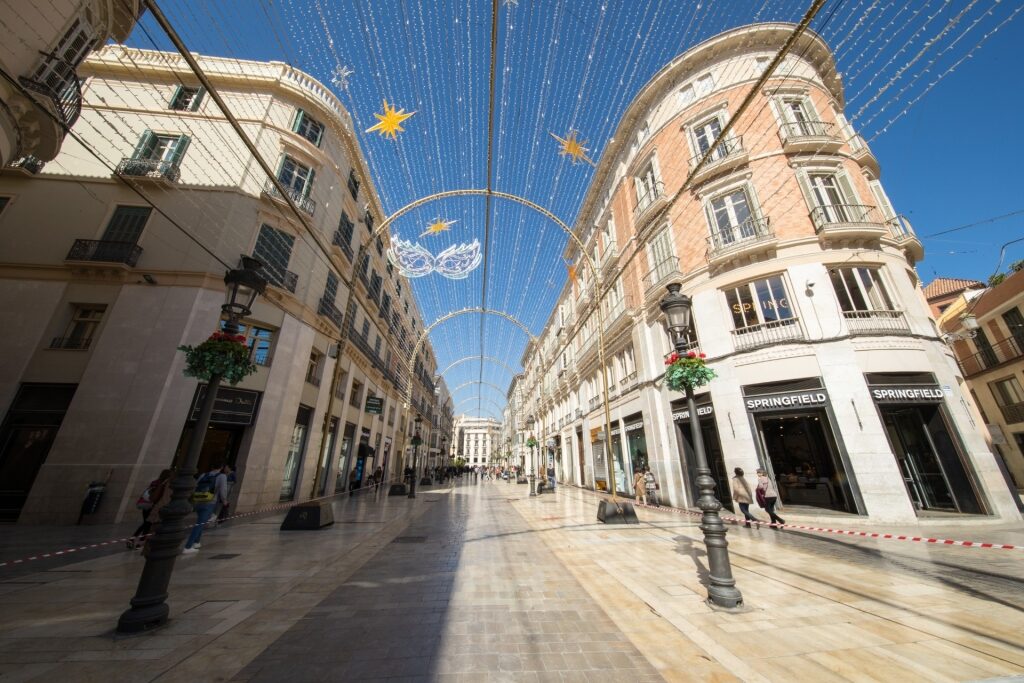
Calle Larios
Since its opening in 1891, Calle Larios has been Málaga Old Town’s main artery. A bustling shopping district and the central meeting hub Malaga is known for, it was pedestrianized in 2003.
One of the best things to do in Malaga is to stroll along the 1,000-foot-long street, named after the Marquess of Larios, who funded much of its construction, while enjoying retail therapy and the city’s beautiful architecture. Pastel-hued buildings, iron street lamps brightened with flower baskets, and bench seating abound.
After pausing for ice cream at Casa Mira—the sometimes ticketed wait is always worth it—continue to Plaza de la Constitución, Málaga’s main square. The 16th-century, mermaid-adorned marble Genoa Fountain is the gorgeous, not-so-centerpiece, placed off-center to leave ample space for celebrations, including Málaga’s Semana Santa.
Shop & Snack in Mercado Central de Atarazanas
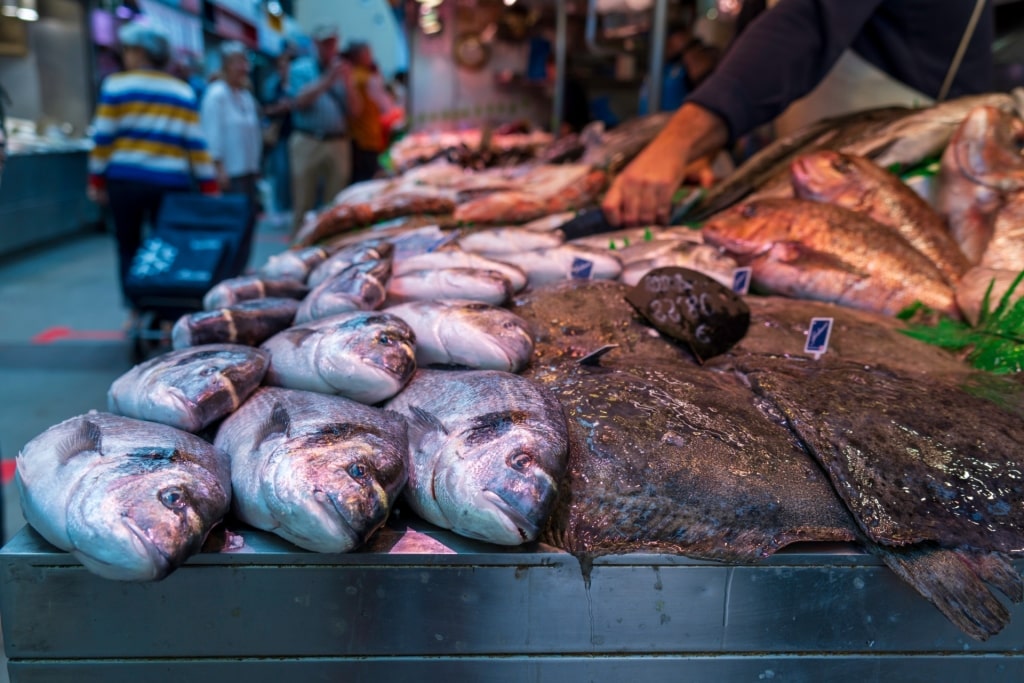
Mercado Central de Atarazanas
In the 14th century, a Moorish shipyard stood in place of Mercado Central de Atarazanas, the word Atarazanas being a direct translation. Therefore it was fitting that in 1870, the building was reconstructed in a neo-Moorish style.
Enter the imposing iron building’s horseshoe archway, the main surviving original element, and you’ll encounter a vivid world of fragrant fruit, animated fish traders, cheeses, and stalls stacked with the freshest regional produce.
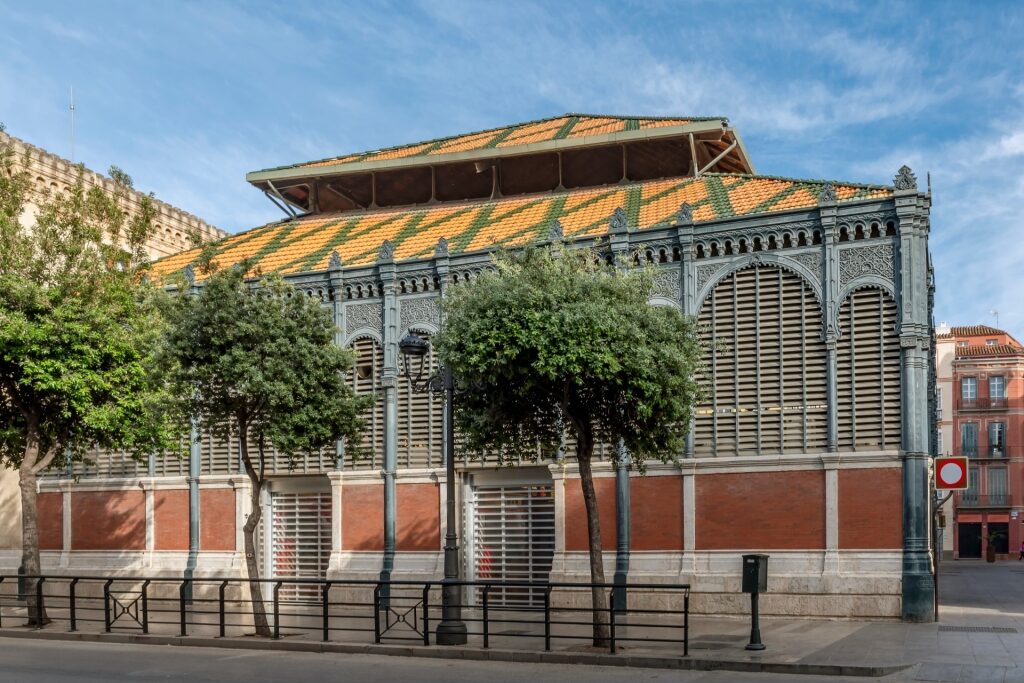
Mercado Central de Atarazanas
Beyond the culinary treats, the market’s most impressive feature is the vast stained-glass window illustrating scenes of Málaga’s most important landmarks.
Pause for a snack at one of the tapas bars within the market. Or, for something sweet, slip away to nearby Casa Aranda to savor excellent churros, sugar-dusted fried dough dunked in decadently thick hot chocolate.
Sip or Study Málaga’s Wine
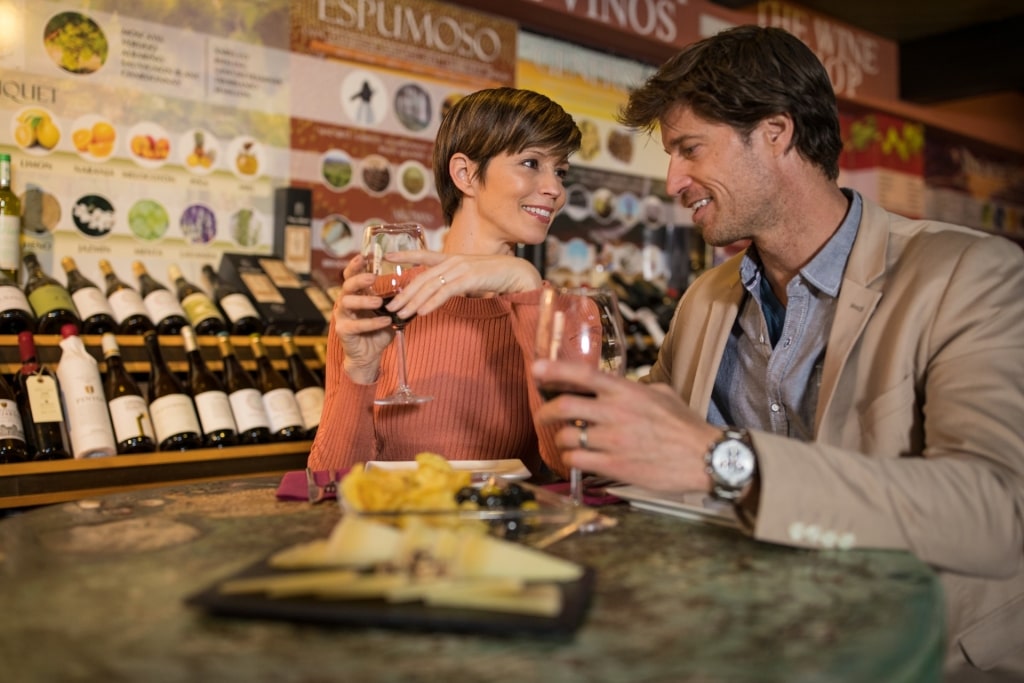
Los Patios de Beatas
Since the Phonoecians first planted grapes in the eighth century BC, Málaga province’s viticulture has been refined by those that followed. Now most famed for its fortified and sweet wines produced from the Moscatel and Pedro Ximénex grapes, the city is well endowed with quality wine bars.
For a straight-from-the-barrel experience, you don’t even need to leave Málaga Old Town. The walls of the city’s oldest wine bar, Antigua Casa de Guardia, are lined with tapped barrels housing a wide variety of local tipples. It’s said that even Picasso would pause here for a glass of vino.
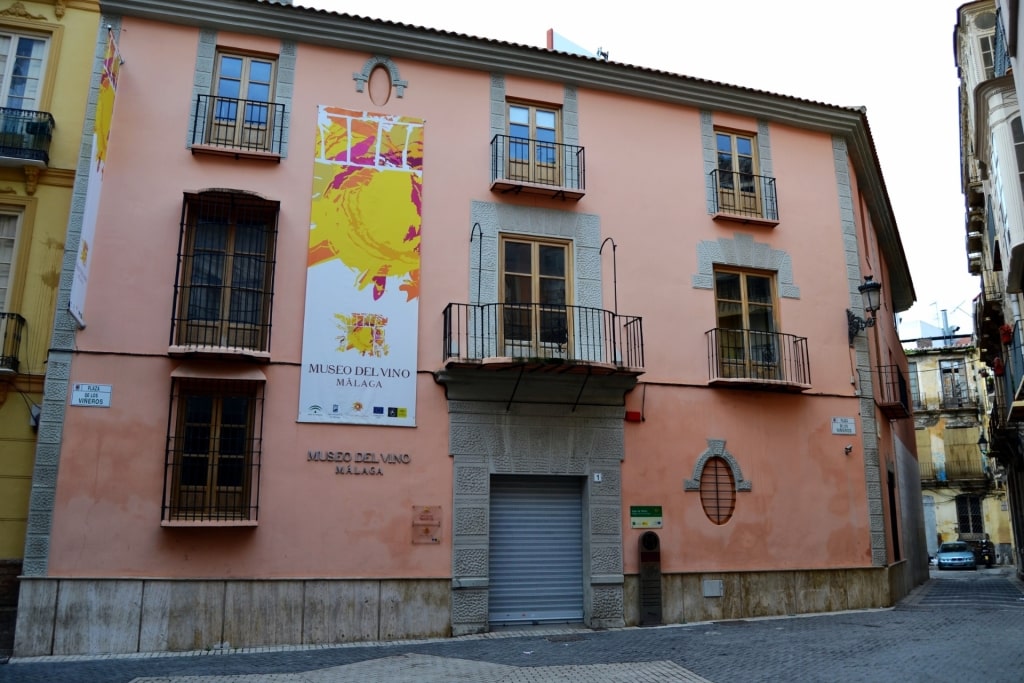
Museo del Vino-Málaga Photo by Emilio J. Rodríguez-Posada on Wikimedia Commons, licensed under CC BY-SA 2.0
Squeeze inside the standing-only bar and take your palate on a tasting tour across Málaga province with helpful recommendations of which tap to try next.
If you’d prefer to pair your tasting with knowledge, the Museo del Vino-Málaga on the Old Town’s fringes affords an overview of the province’s varying terroirs and denominations. The experience ends with a sampling of two regional vinos.
Watch a Flamenco Performance
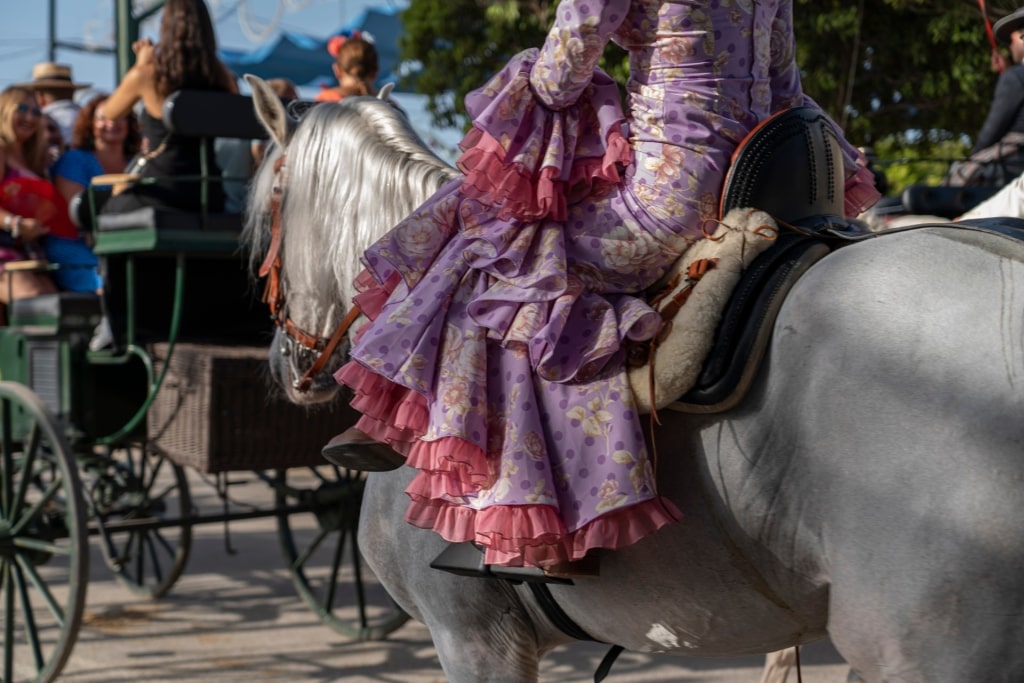
Flamenco
Flamenco is much more than the musical genre that Spain is known for. This fiery and passionate song and dance performance is a foot-stomping, castanet-clapping, and guitar-accompanied glimpse into southern Spain’s spirited soul.
Deeply linked to Andalusian culture, flamenco hails from nearby Granada, though its origins are debated between Moorish or Roma influence. Regardless, witnessing this intense and haunting art form, performed in the traditional and flamboyant Bata de Cola dress, is a must while in Málaga Historical Centre.
While many performances happen well after sunset, one-hour daytime concerts are regularly performed at the Museo Interactivo de la Música, while the more flashy Teatro Flamenco Málaga Club hosts late afternoon renditions.
To dive deeper into flamenco and its history, visit the Peña Juan Breva Museum. Named after one of Málaga’s most famous flamenco singers, it houses hundreds of recordings, guitars, costumes, and figurines across three floors.
Marvel at the Museo de Málaga
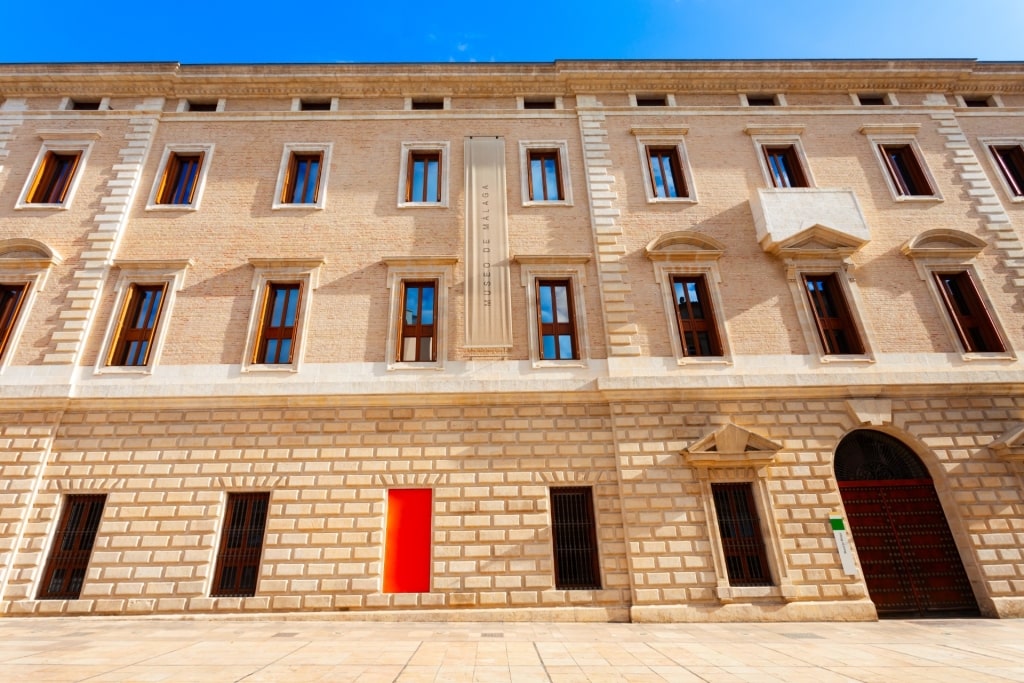
Museo de Málaga
Malaga’s Historic Center has excellent museums and galleries to explore. However, if you only have time for one other after the Picasso exhibition, make it the mighty Museo de Málaga.
Hoarding a vast and varied five-figure collection covering both archaeology and fine art, the exhibits look perfectly at home in the eye-pleasing Palacio de la Aduana. The inner courtyard and the building’s grandeur are almost as impressive as the pieces.
Local artists, such as Muñoz Degrain, are well-represented, alongside Spanish masters, including some of Picasso’s earliest works. The archeological finds from the Alcazaba are equally as striking, as are the extensive and well-preserved mosaics such as the first-century Birth of Venus stealing the show.
Restaurants
Bar La Tranca
For a friendly and unfussy introduction to Andalusian tapas, look no further than this cozy, wooden-beamed, tile-lined bar on the edge of Málaga Old Town.
Settle on a stool and listen to the singing servers standing in front of the vinyl-decorated bar. Excellent tapas, including boquerones, a typical small plate of anchovies in vinegar that are so beloved they have become a moniker for malagueños themselves, flow freely.
Los Patios de Beatas
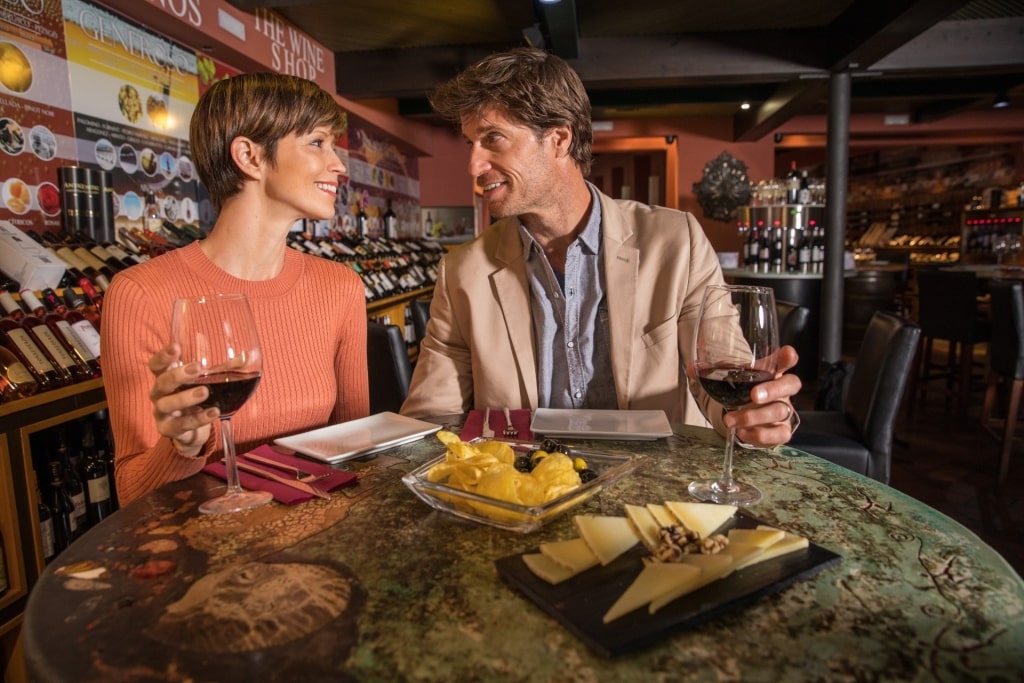
Los Patios de Beatas
It’s easy to overlook the unassuming facade of this restaurant yet once inside, you’ll quickly abandon any idea of eating al fresco. Spread across two renovated 18th- and 19th-century homes, the main dining room is anchored around a typical Andalusian patio crowned with a spectacular stained-glass window. With only eight tables, you’ll want to reserve ahead.
Luckily, the wine bar area extends across multiple rooms, where celebrated sommeliers offer suggestions from the 40-odd wines served by the glass.
Vermuteria La Clasica
Spanish Vermouth, a botanical-infused fortified wine, is considered to hail from Catalonia, yet Málaga’s sweet grapes make an equally perfect pour. Relax on the terrace of Vermuteria La Clasica in the heart of Málaga Historic Center and enjoy a provincial vermouth on ice, complete with an orange slice.
Accompany your chilled aperitif with the bar’s refreshing local tapas, such as ensalada malagueña, a cold dish of potatoes, hard-boiled eggs, and salted codfish, or pipirrana, a tomato and prawn salad.
Balausta
Embrace elegance inside the dining room of this 18th-century palace, set within a typically Andalusian central courtyard. Islamic-style arches flank the airy space, where Málaga’s most esteemed recipes take center stage.
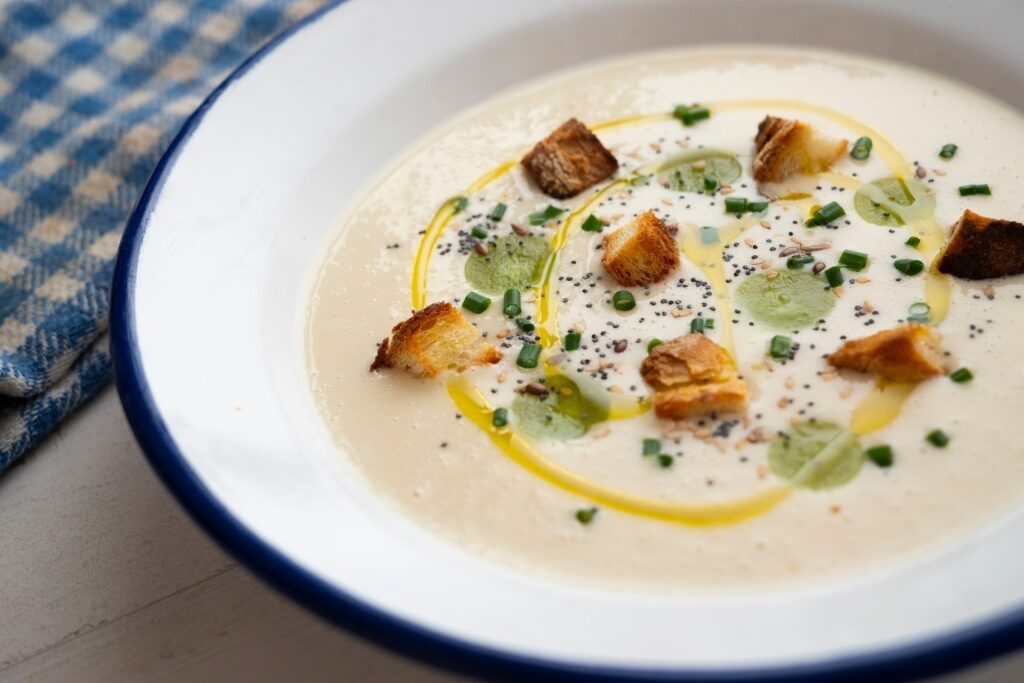
Ajoblanco
Sample elevated takes on regional dishes like ajoblanco, a chilled bread, almond, and garlic soup, or local favorite malagueña clams, or opt for chef Sergio Solano’s tasting menu. Reservations are highly recommended.
Travel Tips
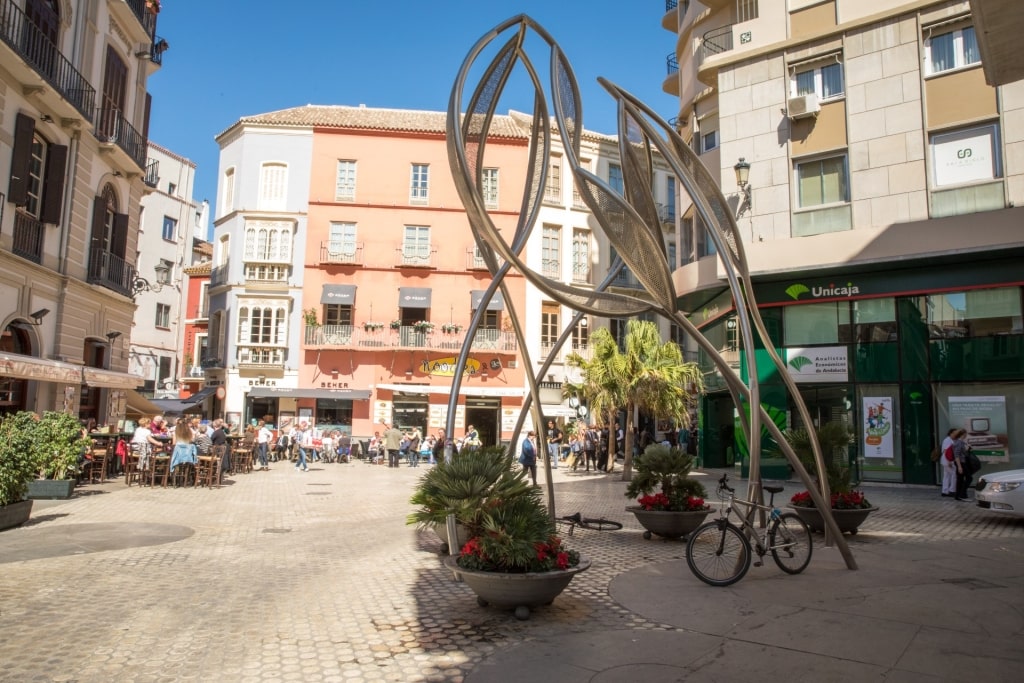
Malaga Old Town
Malaga Old Town is a fantastic shopping destination for Spanish souvenirs, including traditional clay and ceramic pieces inspired by the Moorish period. Stop by Alfajar, where many of its vases and sculptures are adorned with Picasso-style imagery, or Rot, which also hosts ceramic workshops, to find hand-painted works.
Other specialist local crafts include glassware and embroidered religious textiles, especially the patterns used during Semana Santa, or Holy Week. Alongside museums dedicated to both—the Glass and Crystal Museum and Museo del Arte Cofrade—you’ll find plenty of shops selling similar items.
If you’d like to take a slice of soulful flamenco home, roam the streets around Kelipe Centro de Arte Flamenco to find wooden castanets, traditional floor-length dresses or mantoncillos, the patterned and colorful accompanying shawls.
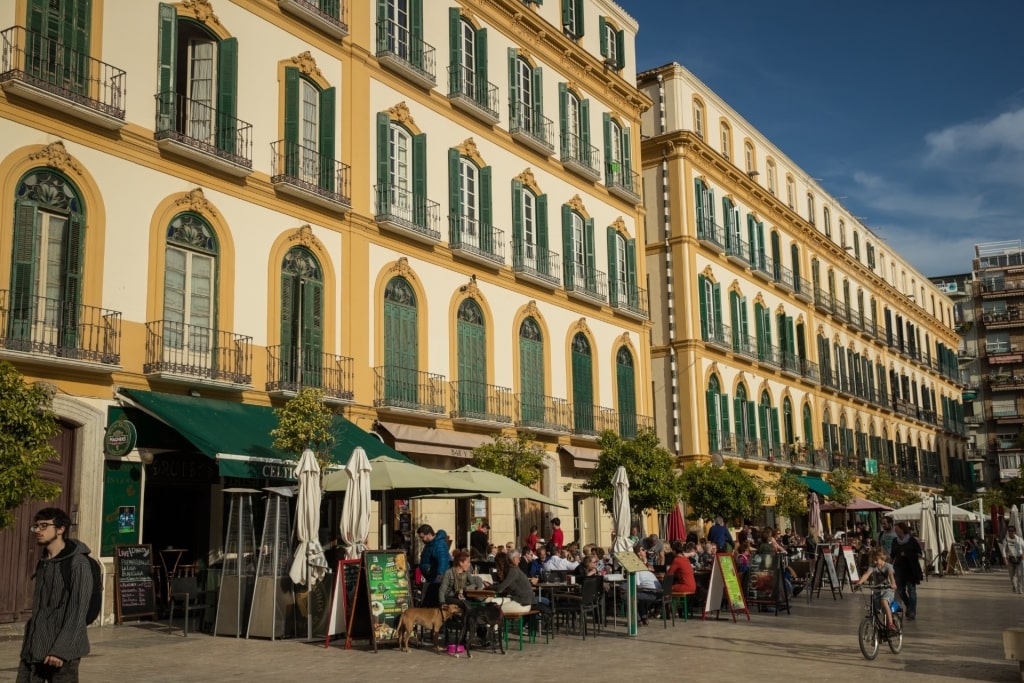
Plaza de la Merced
Remember that in summer, much of Spain takes a siesta and Málaga is no exception. Some shops will close between 2 pm and 5 pm, so time your activities accordingly; this is a good time to head for the beach and a seafood lunch.
No matter what time of year you visit Málaga Historic Center, it’s advisable to pack comfy shoes with a good grip, especially for touring the Alcazaba. High-SPF sunscreen and a hat are also essential.
Bring a shawl for any church visits, which require you to cover your shoulders. With Málaga’s beaches so close, a bathing suit is also handy for an impromptu dip.
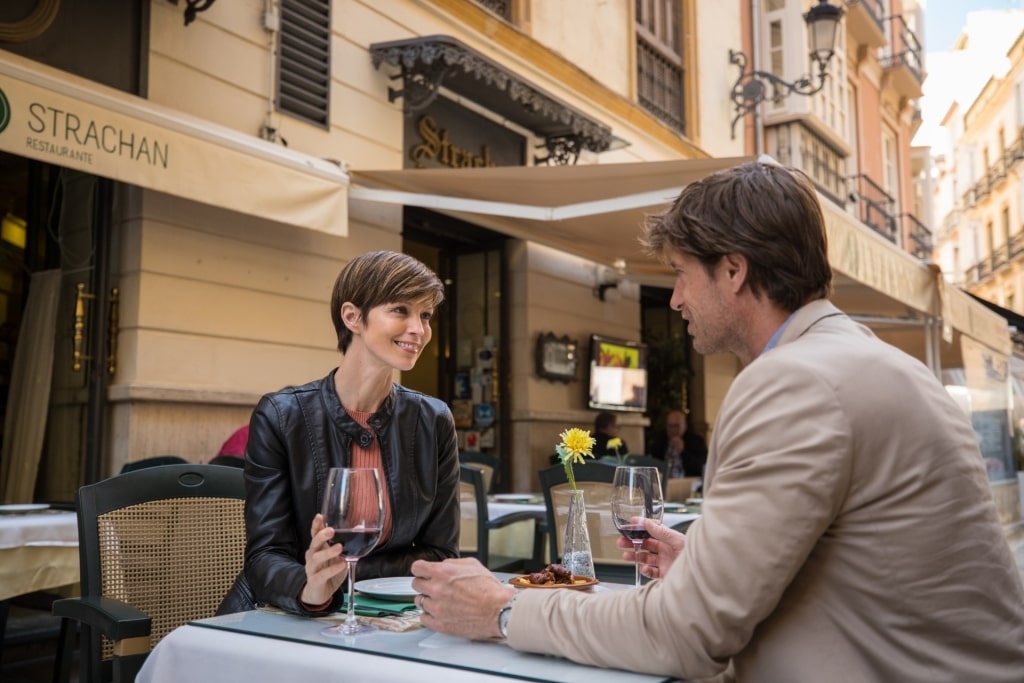
Malaga
Excited for Málaga’s tapas, culture, and clutch of historic sights? Browse Celebrity’s cruises to Málaga to plan your luxury vacation to Andalucia.
